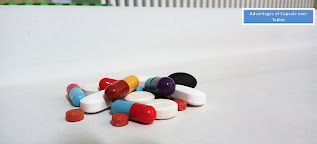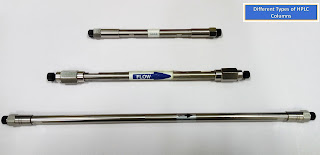What is paper chromatography?
Paper chromatography is one of the oldest and easiest separation techniques that have evolved along with other modern variants such as high-performance liquid chromatography (HPLC), thin-layer chromatography (TLC), gas chromatography (GC) and hyphenated techniques throughout the years. Paper chromatography is a planar chromatography in which the stationary phase is a cellulose filter paper, on which the compounds are isolated. The edge of the paper is immersed in a mobile phase or solvent, and it moves up the paper by capillary action so the compounds are isolated.
Mechanism of separation in paper chromatography:
The process consists of a sample apply as a spot close to a corner of a paper. The filter paper is initially saturated with some suitable solution to form the stationary liquid phase. An edge of the paper above the sample spot is then soaked in another solution, in that the analytes become soluble in different degrees. The solvent enters by capillary action in the stationary phase and, passing through the spot of the sample it carries different analytes of the sample.
The analytes travel with a solvent flowing in velocity that is dependent on their solubility in the stationary and mobile phase. The separation of analytes is achieved when their relative solubility varies between the two solvents. Both solvents are evaporated until the moving solvent reaches the farther edge of the stationary phase and the position of the separated analytes is recognized, generally, reagents are sprayed to appearance colored compounds with different substances. The isolated analytes show as spots on the path of the solvent and hence we can calculate the Rf value of the compound. If the mobile phase that flows in one direction and that cannot adequately separate all the molecules, then the paper can be turned 90° and the process can repeat with another mobile phase.
The principle of paper chromatography:
"partition" is the basic principle involved in paper chromatography, in which the solutes are partitioned or distributed among the liquid phases. In this method a special type of chromatography paper or a piece of filter paper used as a stationary-phase which is made with cellulose. The mixture of sample is applied to the paper and the edge of the paper is immersed in a mobile phase which is placed in the TLC chamber. The mobile phase or solvent runs on the paper under capillary action in paper pores. The capillary attraction of the solvent relies on the cohesive and adhesive forces allow the mobile phase to travel up the stationary phase because of created surface tension interaction from the forces.
The properties and structure of each molecule vary, so they have differences in the relative affinity for the stationary phase and the mobile phase. It is also in the form of adsorption chromatography between liquid and solid phases, in that the mobile phase is the liquid and a stationary phase is a solid surface. Though the most widely used paper chromatography operates on the partition chromatography theory.
Different types of paper chromatography:
There are 5 types of paper chromatography available, depending on how the chromatogram is developed.
Ascending chromatography:
As the name suggests, chromatograms are ascending in this type of paper chromatography. The chromatograms are developed due to the upward movement of the mobile phase on paper. The solvent is at the bottom of the TLC chamber. The paper tip below the sample spot immerses to the bottom and therefore the spots remain just above the mobile phase.
Descending chromatography:
In this form of paper chromatography, the paper is developed by the solvent travels downstream of the paper. The solvent is flowing from the top of the stationary phase and it moves by gravity.
Ascending- descending mode:
This is a hybrid type of paper chromatography, the mobile phase first flows-up over a stationary phase, which is folded onto the rod and starts traveling downwards after crossing the rod. This method allows longer-term development and gives higher resolution, particularly used for the complex sample mixtures.
Radial or horizontal mode:
The solvent travels from the center to the periphery of the circular filter paper. For the development of chromatograms, this is usually done in a covered petri dish instead of a TLC chamber. The wick at the center of the stationary phase is dipped in the solvent from which the mobile phase is drained on the stationary phase and moves the solutes radially as concentric rings to form the spot of the solute.
Two dimensional paper chromatography:
In this type of paper chromatography, stationary phase is first used with one mobile phase in one direction, and then another solvent is used in direction at right angles to the first, after the paper has been dried.
Commonly asked questions on chromatography are as follows.
What is the paper used in paper chromatography?
Paper is made of cellulose fiber, and cellulose is a polymer of simple sugar, glucose.
What are some examples of chromatography?
Column chromatography, thin-layer chromatography (TLC), high-performance liquid chromatography (HPLC), gas chromatography (GC), partition chromatography, ion-exchange chromatography, are some examples of chromatography.
What does paper chromatography separate?
Paper chromatography is used to isolate colored chemicals or compounds.
What factors affect paper chromatography?
Length of the paper, the composition of the mobile phase, quality of paper used, nature of solvents used, temperature, the thickness of the paper, the polarity of components, the pH of the solvent, and saturation of the solvent, etc. are the factors that affect paper chromatography.
What are the advantages of TLC?
TLC is a type of planar chromatography it has many advantages such as, it is very simple to use, it required less time to isolate the compounds, it requires less amount of sample, we can recover the sample by scratching the TLC plate, more sensitive than paper chromatography, and it can be upgraded to HPTLC.


